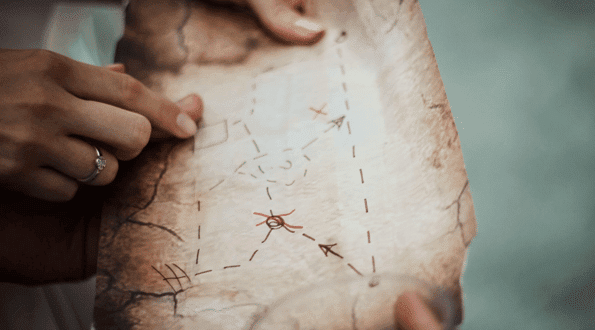Puzzle Break Escape Room Team Skills: Team Cohesion
When we talk about the advantages of our escape experiences within the framework of team building, we often refer to the term “participant focus areas”. These are the “mental muscles” that will be exercised in the activity in order to strengthen individual skills and position teams for maximum performance after their Puzzle Break experience. In this series of blog posts, we will explain exactly what each participant focus area means, and how our experiences test for it.
Photo of a remote team beginning to play School for Spies. This first experience is specifically designed to warm our guests up to the virtual setting, pushing them to figure out how to work together successfully.
Team Cohesion
Today we will be exploring “team cohesion”; it’s a concept we focus on and talk about frequently because it is at the heart of what we do. What is “team cohesion?” Good question! The teamwork experts at Six Sigma: “the extent to which team members stick together and remain united in the pursuit of a common goal”, a simple-enough concept of outsized importance to any teams’ success. Take for example the first half of their definition, the “sticking together” aspect – there’s more to it than just meeting regularly and having lunch together (although we happen to think that’s pretty important too).
When we talk about a cohesive team it’s about being connected to one another, sure, but it’s also about how well you communicate, understand one another’s responsibilities, and work together as a group. You’ve probably seen what the absence of cohesion looks like at some point in your career; duplicated efforts, dropped responsibilities, infighting and resource hoarding are all common symptoms of a lack of cohesion. When people feel isolated or siloed they only see their own responsibilities as important; the team that sticks together shares resources, communicates about roadblocks they’re dealing with, and pitches in to help one another get across the finish line.
In our escape experiences, we present guests with carefully formulated examples of this; participants are presented with a complex problem in the form of a puzzle, with multiple smaller objectives to complete to gather the resources they need to solve it. Successful teams share information, bring discoveries to the attention of the whole group, speak up when they’re stumped, and dynamically change their workflows as new challenges arise. When one team member is speeding along, sees someone else struggling with a puzzle element, and shifts their priorities to help their teammate figure out a solution, that’s team cohesion in action.
(Don’t worry, this photo was taken before Covid-19) The pressure of a ticking clock tests a group’s ability to work together without their team cohesion or communication breaking down.
The second half of Six Sigma’s definition is also critical – remaining united in the pursuit of a common goal. This is the idea that while everyone on a team has a job to do, the ultimate objective of every member of a team is to help achieve the common goal of the team as a whole. Whether that’s to complete a product and get it to market, to provide a service, or in our case to escape a room full of fiendishly tricky puzzles, everyone’s personal tasks are feeding back into that overarching objective.
This idea is at the heart of all of our experiences – while the team as a whole has the objective of solving a complex challenge, there are always multiple smaller puzzles/tasks/objectives that need to be solved, information that needs to be sifted through and tasks that need to be performed by the participants. It’s all-important and it all has to be done, but the participants have to keep sight of the fact that they have a team goal to reach beyond completing their individual tasks, and that that team goal is the most vital task they collectively have to complete. Much like in business, the teams that succeed never take their eyes off the prize.
– Nate
Looking to take your team’s performance to the next level? Puzzle Break’s Team-Building Experiences have been enjoyed by millions of participants across the globe. Whether you are hosting a:
-
Leadership Development session
-
New team member orientation
-
Networking session
-
Sales kick-off
-
Virtual Team off-site
for a team of 5 or 500+, every experience is curated and moderated by our expert team at the time of your choice and is painstakingly designed to maximize participant buy-in, deliver proven employee development results, and provide a valuable morale and teamwork boost. Puzzle Break Team-Building Experiences are available now for unlimited players, anywhere. To get started click the link here or email booking@puzzlebreak.com to learn more.
Want to get blog updates ( and only blog updates )?




Recent posts






Cruise Taker’s Guide to Turks and Caicos: What to do on the Ship and on the Island







